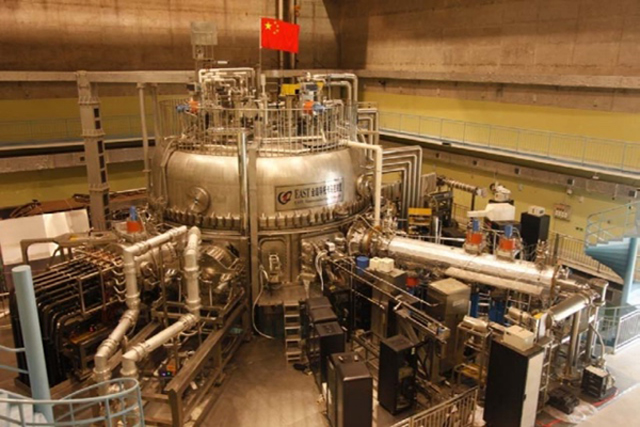
Taking place in Hefei, China’s Experimental Advanced Superconducting Tokamak (or, EAST), scientists conducted the experiment in a donut-shaped reactor that uses an extremely powerful magnetic field. While in use, this magnetic field restrains the plasma into the shape of a torus (or donut) to avoid it making contact with the reactor’s metallic sides. Because of this, the sides of the reactor never actually come in contact with the 90 million degree plasma — of which is desired to avoid anything catastrophic happening.

As mentioned above, the sheer fact China was able to sustain such a high temperature for over a minute and a half is an extremely encouraging step forward. However, EAST would need to continuously sustain an even hotter temperature (think 180 million degrees Fahrenheit) for extended periods of time to successfully create usable energy. What makes a successful trial like this especially appealing is that if a reaction was able to continuously sustain itself at high temperatures, it would essentially create an endless energy source as powerful as the sun. In a time when Earth’s natural resources continue to dwindle, the prospect of this achievement is utterly fascinating.
According to the Institute of Physical Science in Hefei, scientists worked “day and night” on perfecting the trial’s endurance. By reportedly controlling the precise alignments of each magnet and capturing the high-energy particles escaping torus-shaped plasma, the team was able to overcome many of the issues experienced during past tests. Despite the successes, the team says it actually intended to heat the plasma to roughly 100 million Kelvin (180 million degrees Fahrenheit) and wished to sustain it for 17 minutes. Afterwards, it admitted it might still take decades before a viable plant exists to execute such a test.
It should be noted the results of the test came from the institute itself — with no peer-reviewed paper detailing the exact process, no less — so it’s likely the experiment is met with some skepticism among the scientific community. Accredited reviews notwithstanding, the reported findings are no doubt an extremely promising step forward in the world of nuclear fusion and finding a potential remedy to Earth’s energy dilemma.


